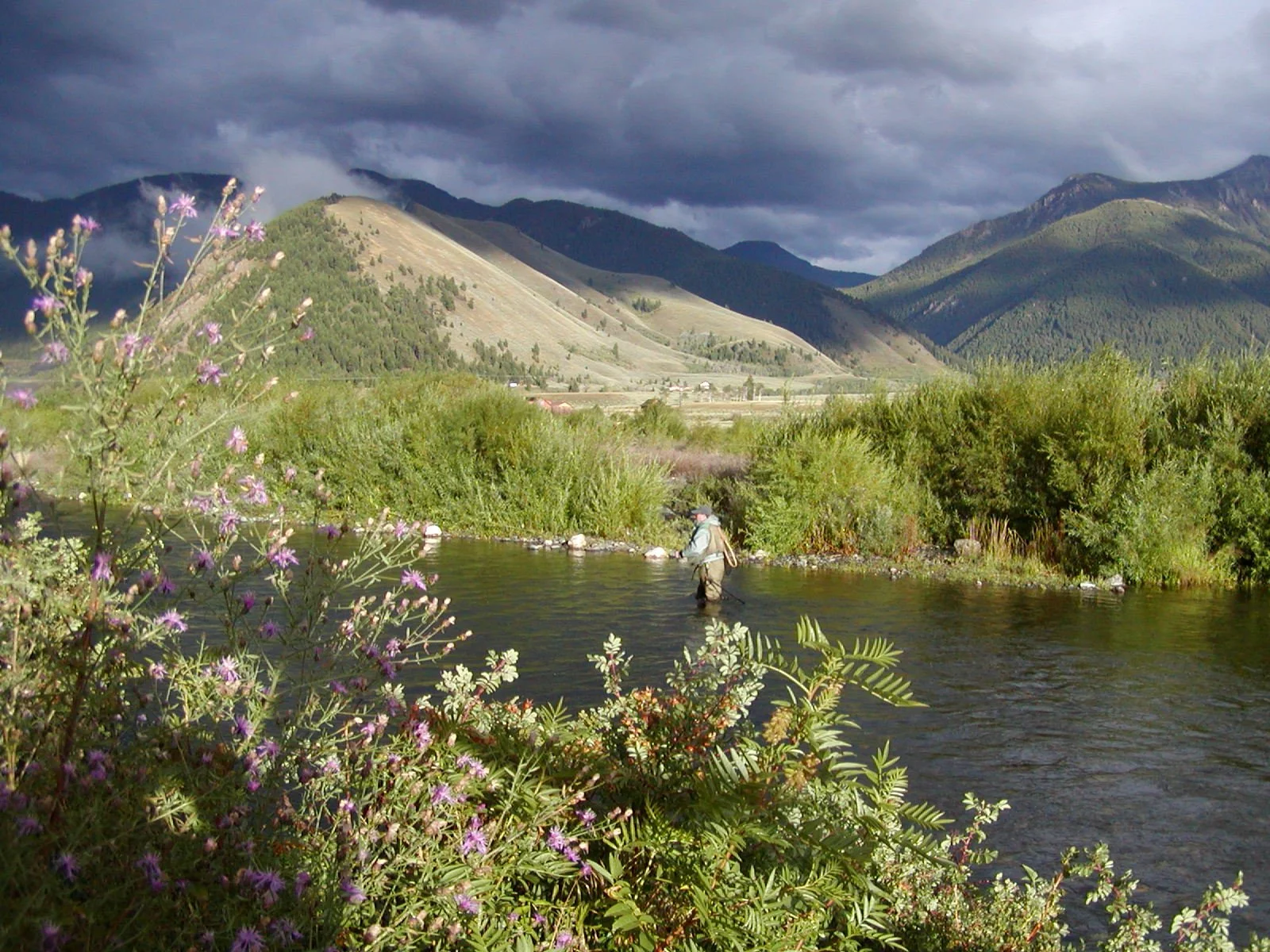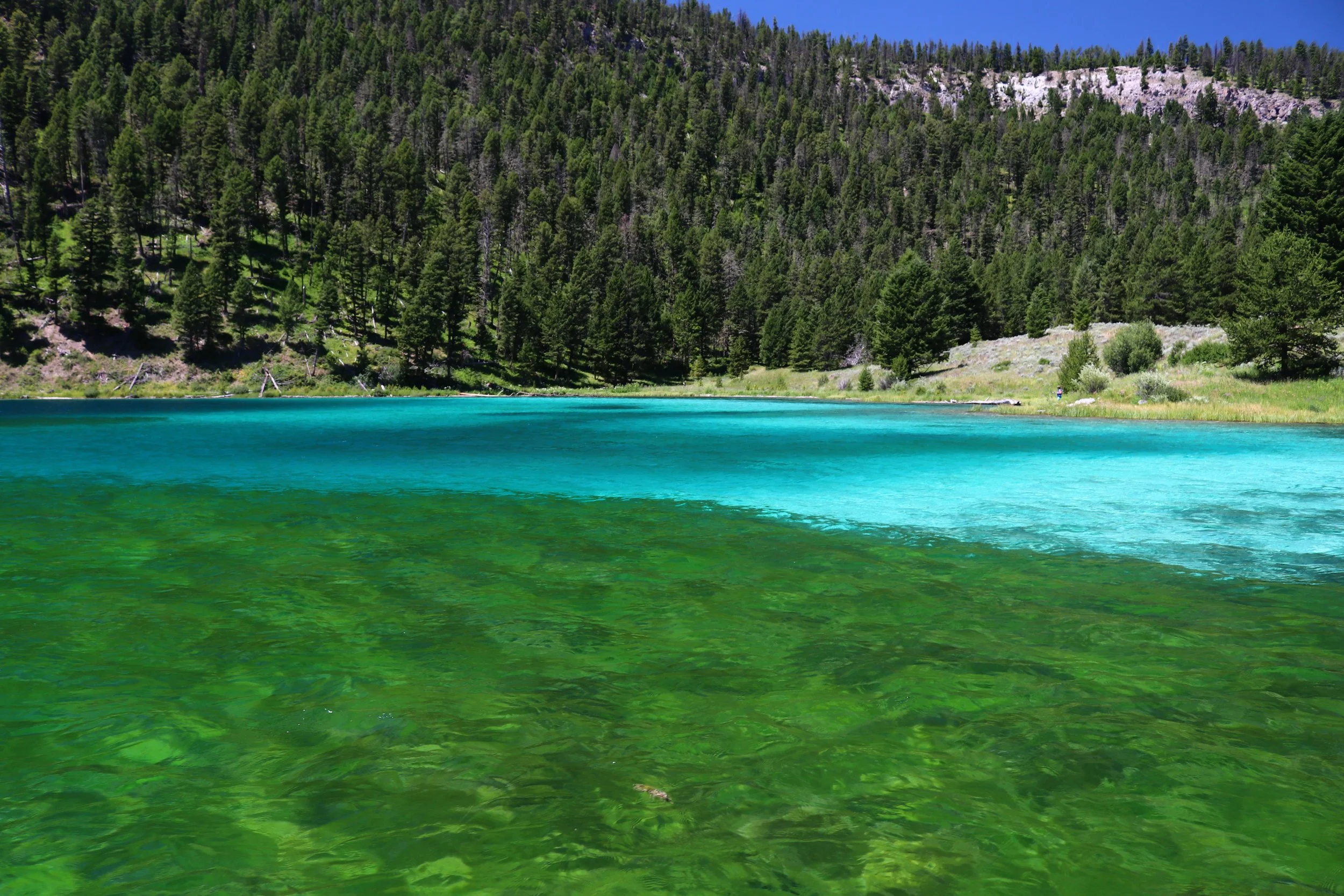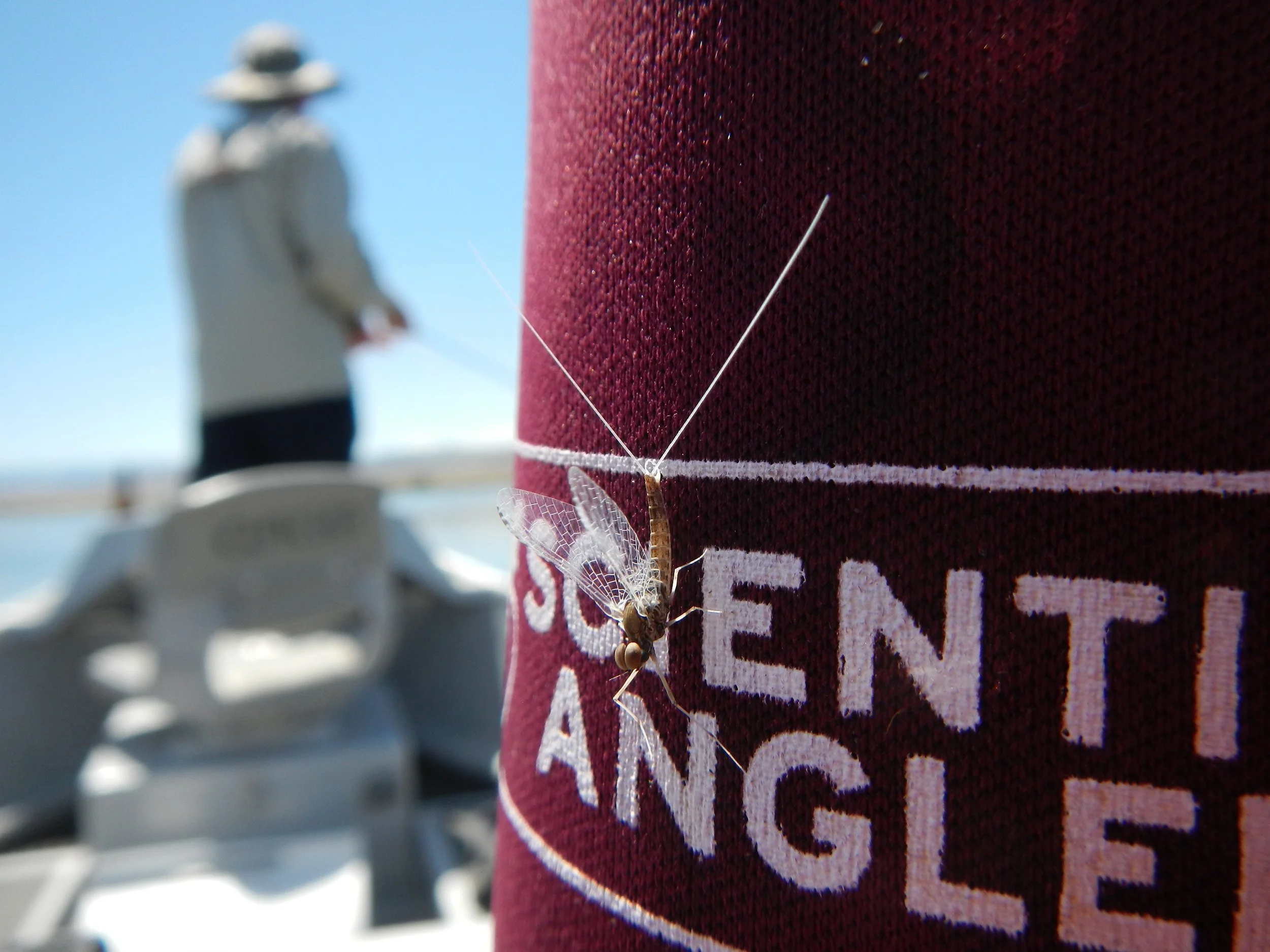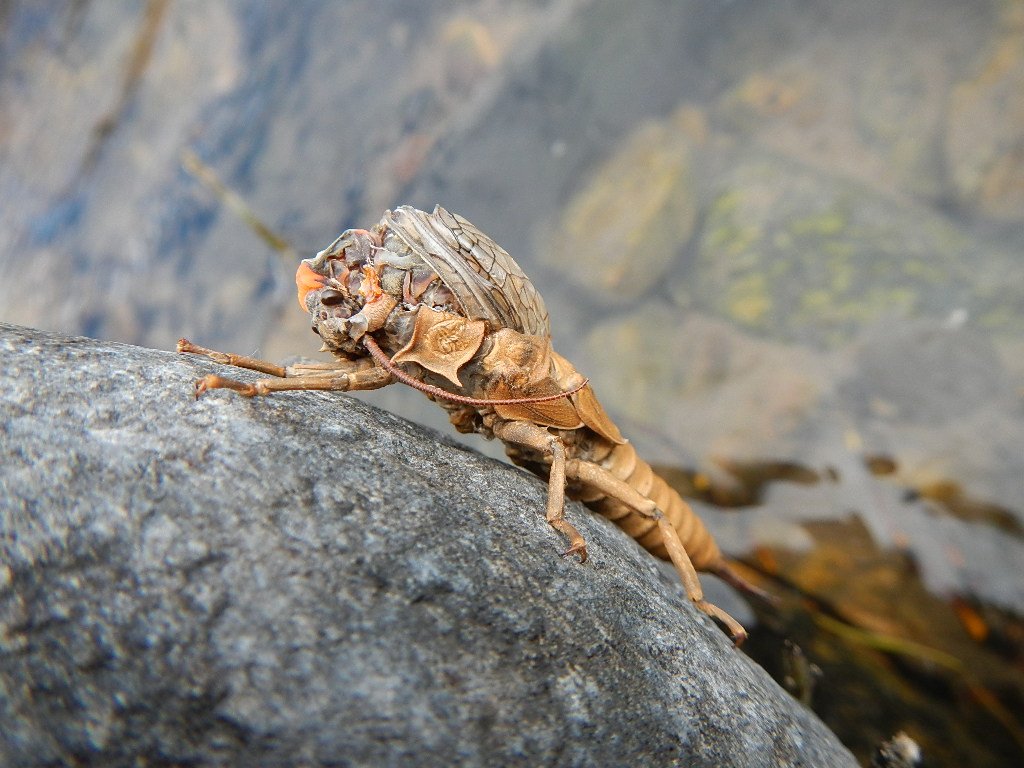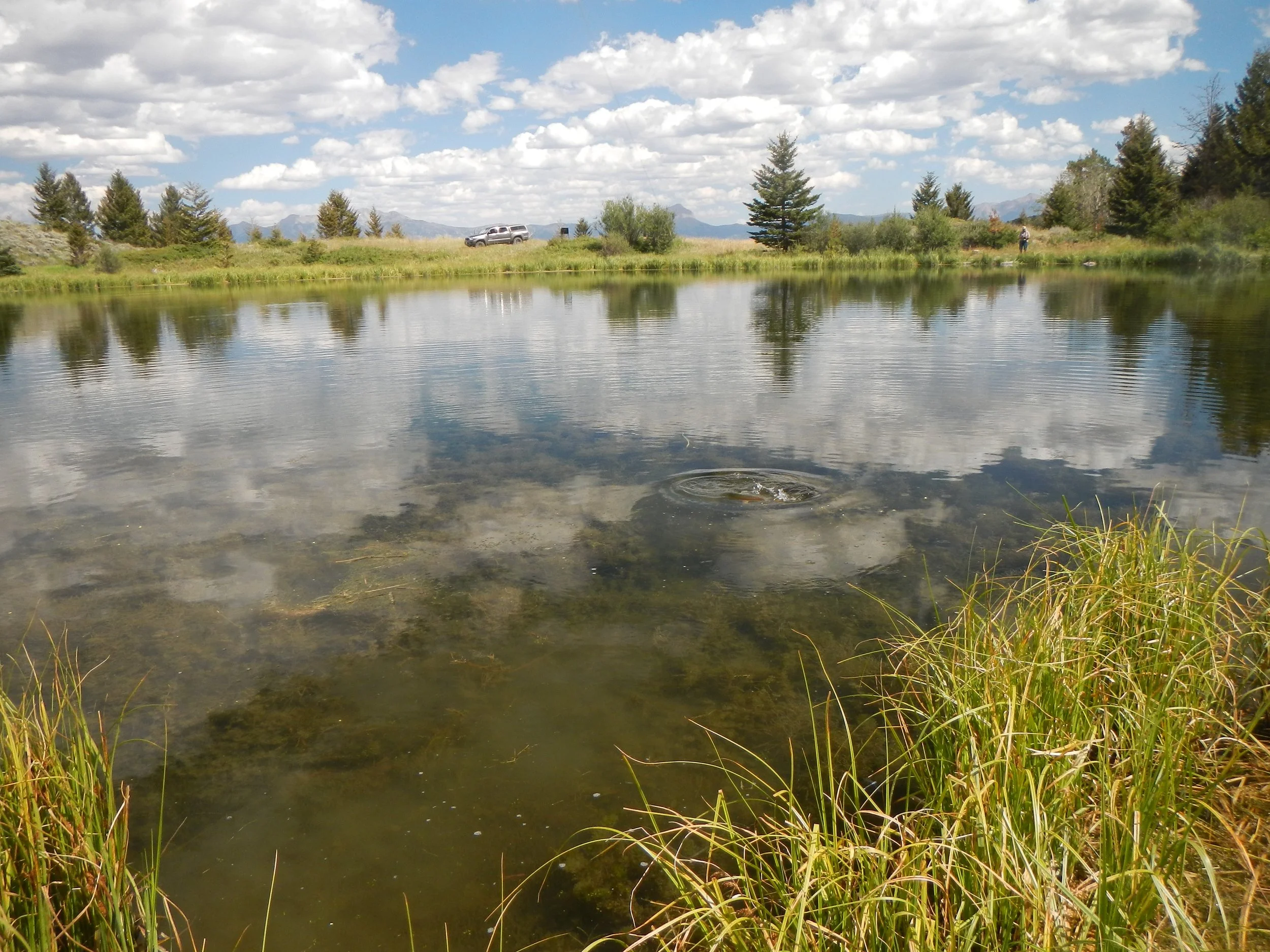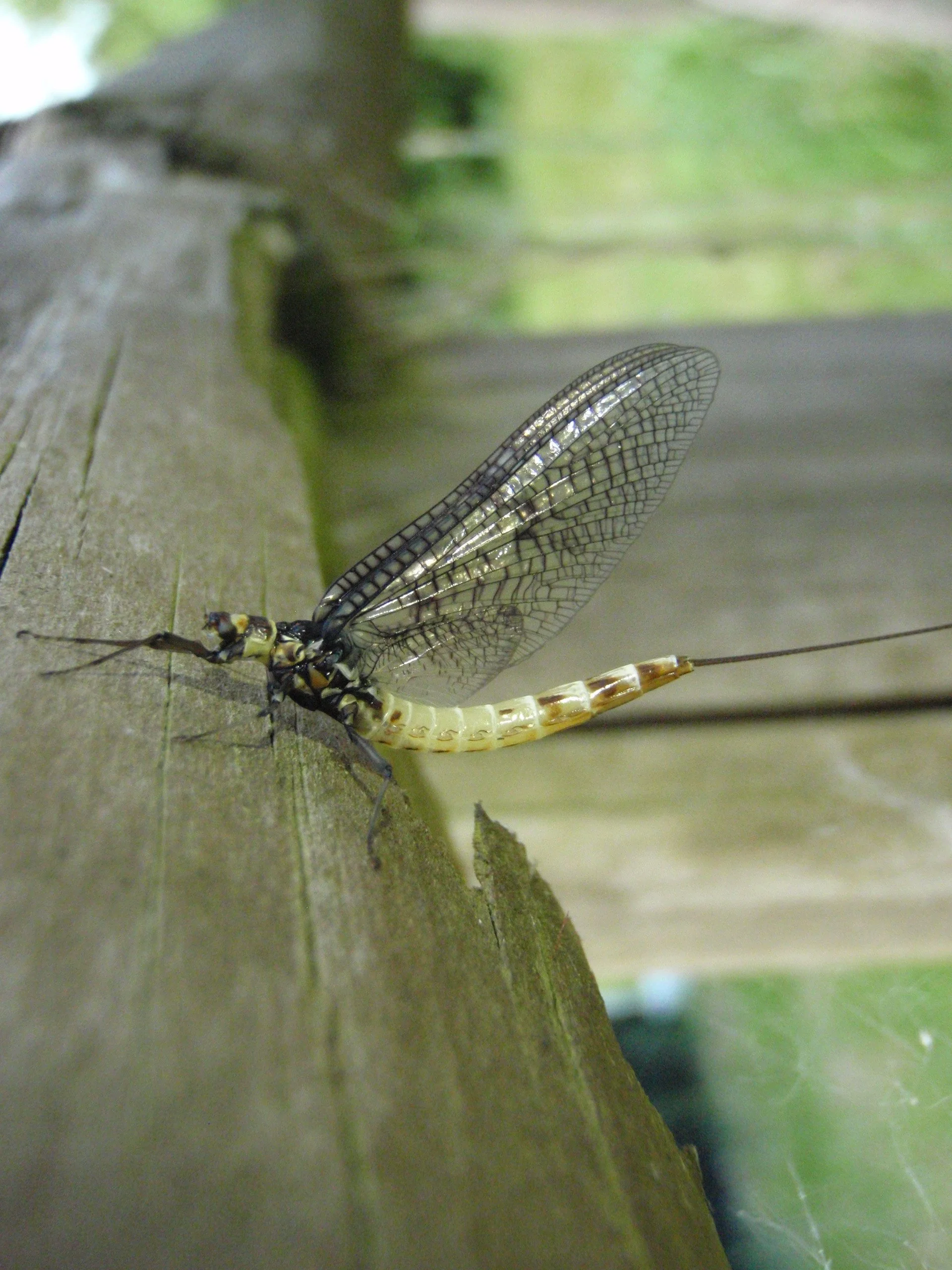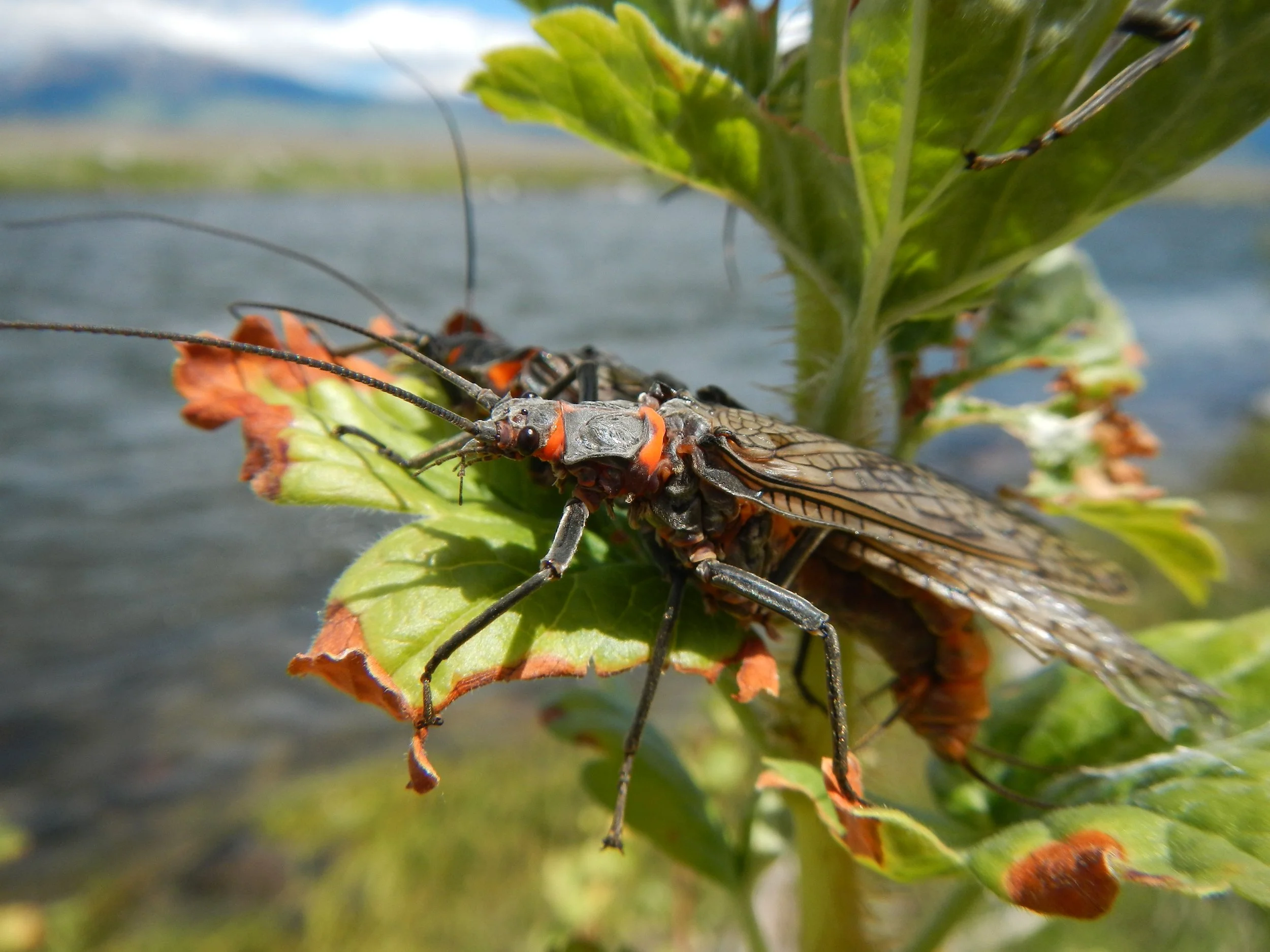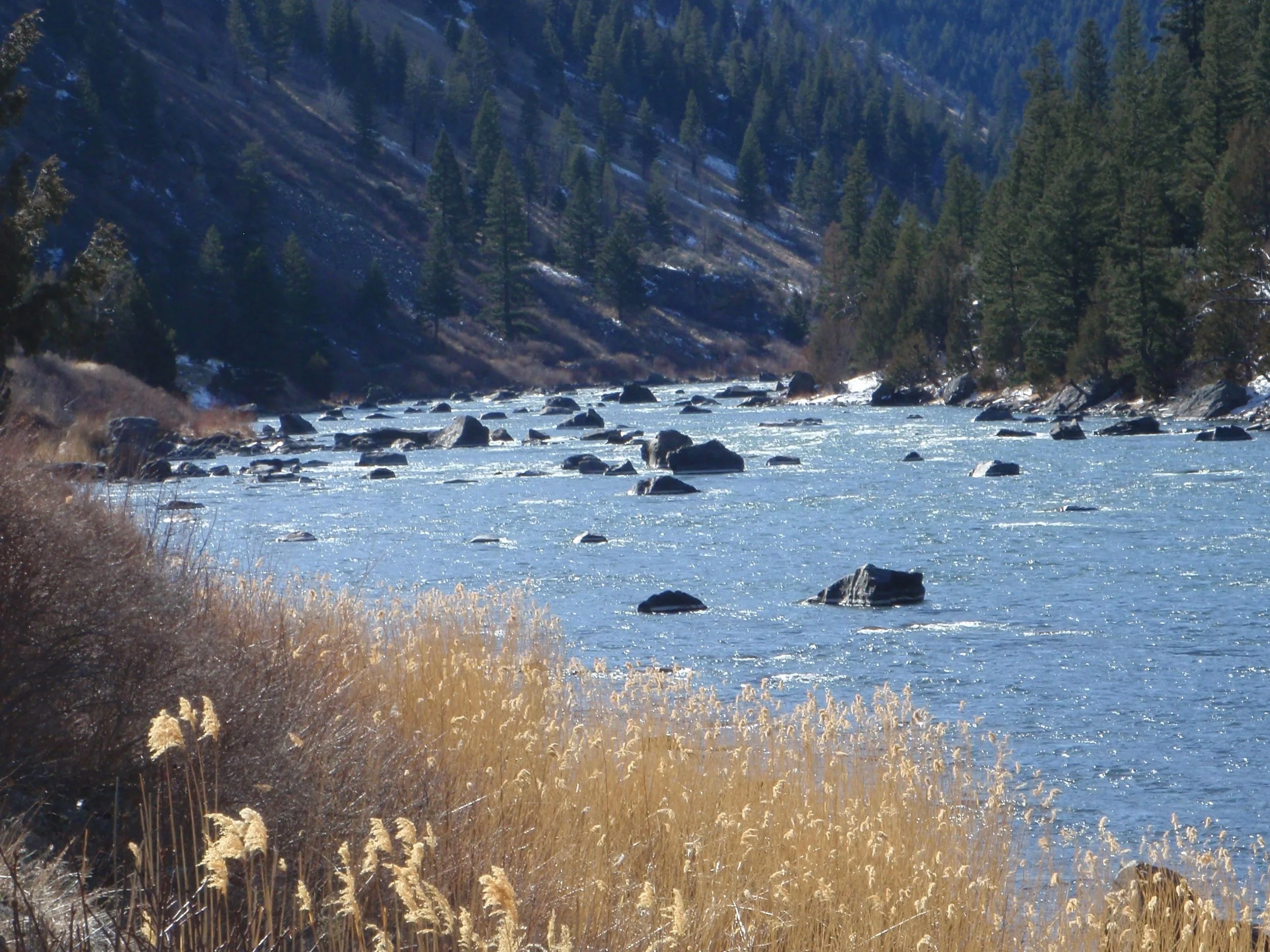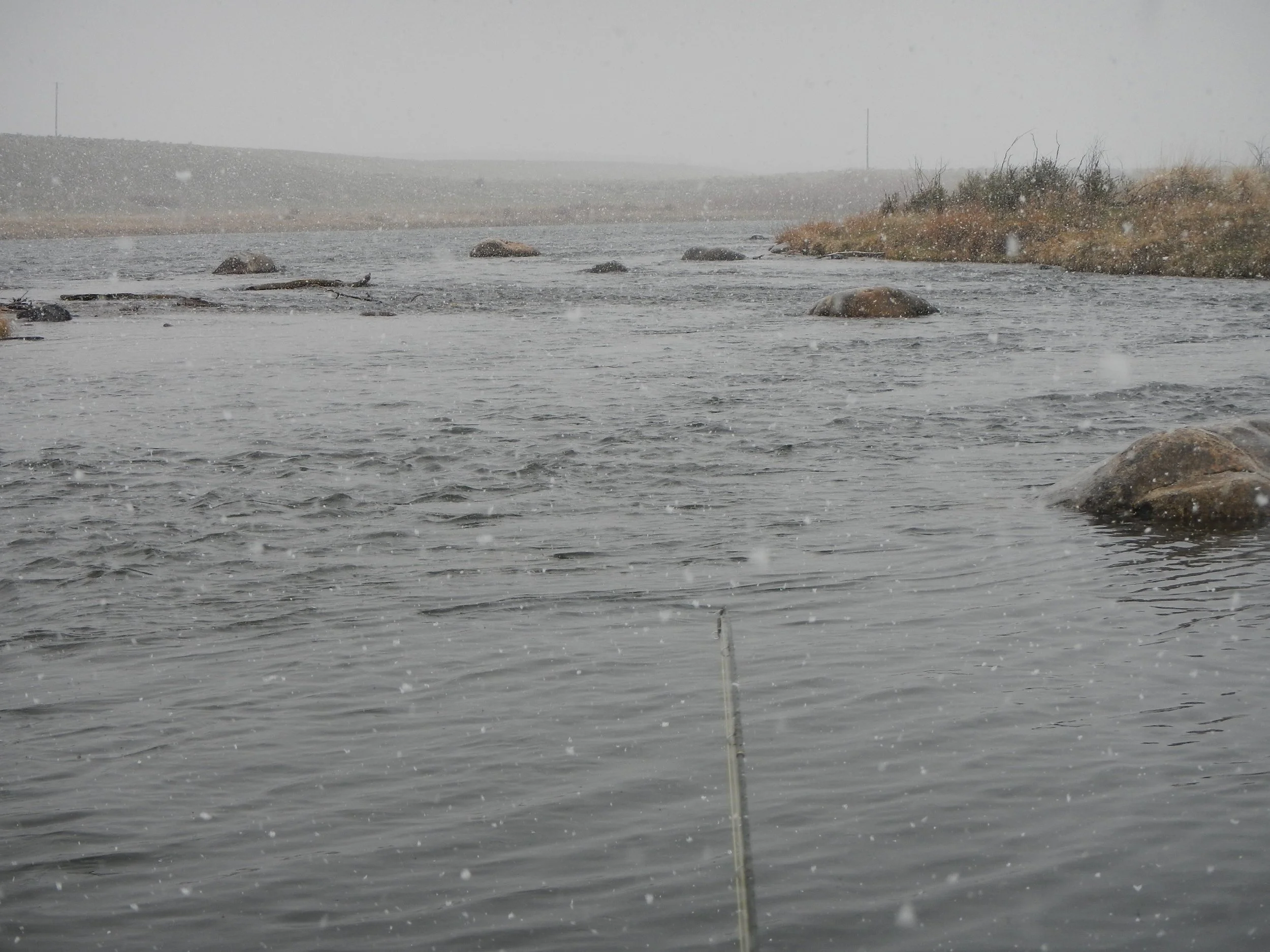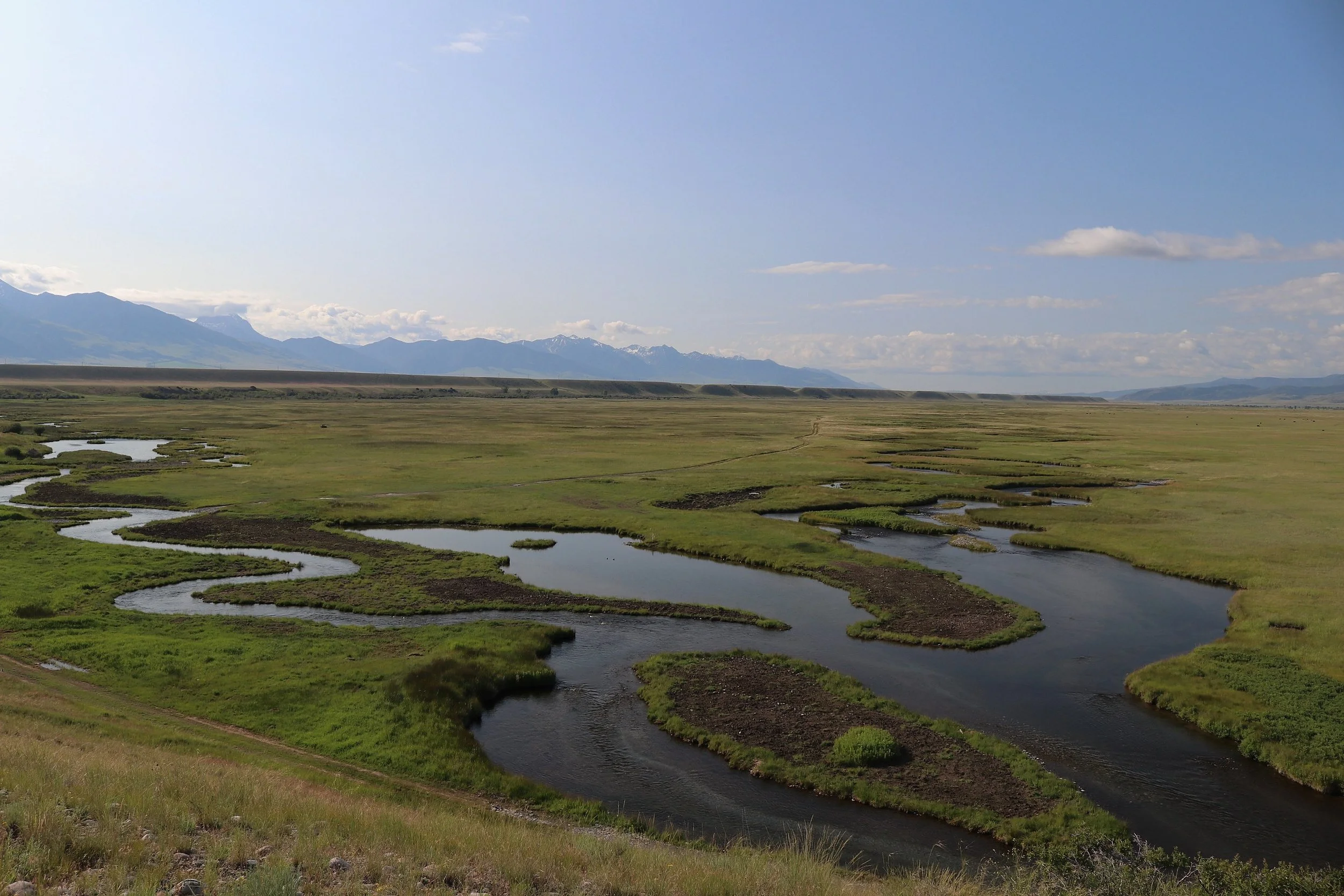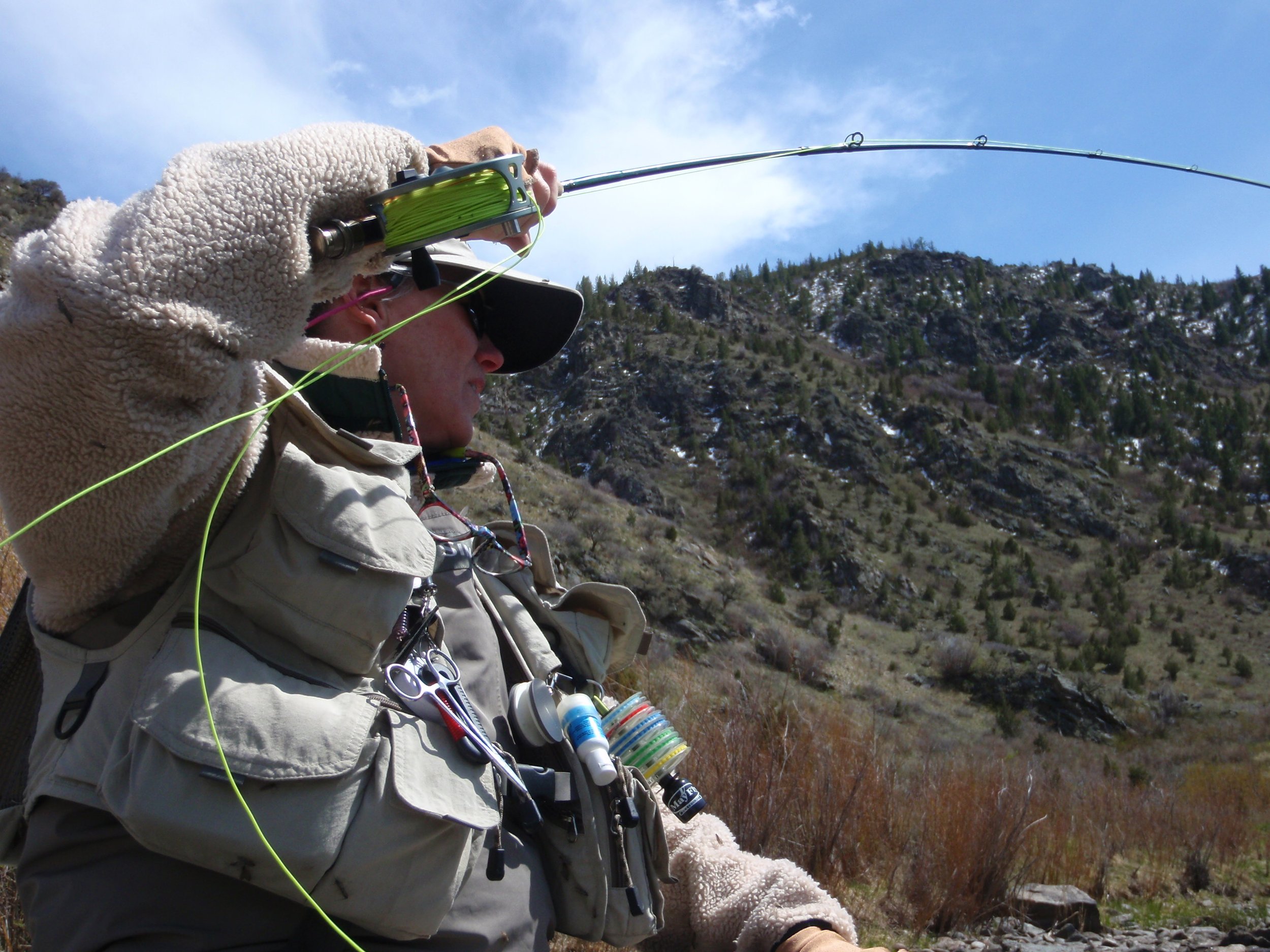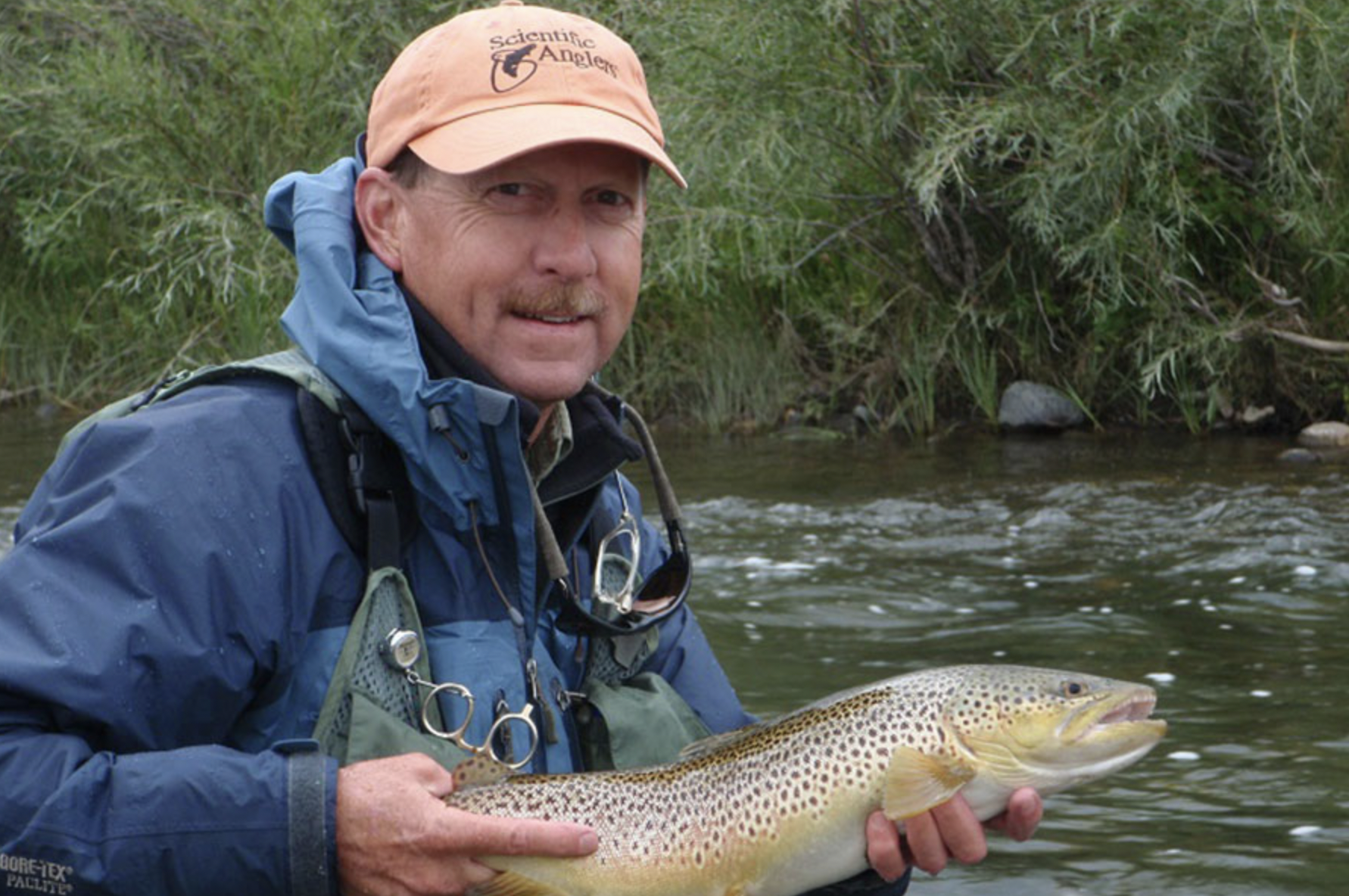
Bruce Richards
Equipment
Obviously what equipment we use for dry fly fishing depends on when/where we fish and personal preference. We aren’t getting paid to fish, my only goal is to have fun. Sometimes the perfect tool for the job isn’t as much fun to fish as something else, I opt for fun!
Most of the dry fly fishing I do is in SW Montana, on a mix of big and small rivers, and lakes. My first choice rod is a medium fast 8’6” 4 wt. graphite rod. A 9 ft. 5 wt. rod would be more functional but the shorter, lighter rod feels much lighter and is more fun! It is windy here. If I must fish in uncomfortable wind I’ll use the longer, heavier rod, maybe even a 6 wt., but dry fly fishing in high wind isn’t as much fun, I can wait…..
If there is no wind and I know that the flies will be small I enjoy using an 8-9 ft. 2 or 3 wt. That doesn’t happen very often here. Recently I fished some #30 single midges I tied, using an old Sage 0 wt. rod. I found that size 30 hooks don’t hold well, no surprise.
I use the same rods on lakes where long casts are the norm. Fortunately lake fishing is best when there is little wind. Lake fishing here is a casters game, without long casts catching fish is difficult. When it is calm long casts can easily be made with a 8’6” 4 wt. rod. Longer, heavier rods are probably more appropriate to the task but not as much fun, for me anyway.
I use mostly old Scientific Anglers large arbor reels. They have good drags for those rare occasions when that is really needed. They are durable, work well, and sound good, I haven’t had any reason to upgrade.
Fly lines… Obviously a big subject for me. But what I prefer is pretty simple. I like standard weight WF lines with relatively long heads, 50 ft. or so. These fish like DT lines at short to medium range, good control, mending, roll casting and are excellent for long casting. These lines have “standard” front tapers, not especially powerful or delicate, all ‘round general purpose lines. If I need more power, or more delicacy during the course of a day I can modify my leader to get it.
For bigger flies, like salmon flies or grasshoppers, I’ll use a 9 ft. 5 or 6 wt. rod with a line that is ½ size heavy, with shorter head and more powerful front taper. There is no joy in trying to throw a bigger dry fly with a line that is too light or delicate to do the job.
A short comment on the current state of the fly line market. Most manufacturers today make a majority of their lines heavier than the industry standard. Fly rods are getting stiffer as a result, which is very unfortunate. In the past it was pretty easy to buy the right fly line for a rod. For a 5 wt. rod, use a 5 wt. line. But today many 5 wt. lines are actually 6 or even 7 wt. lines. It is no longer easy, to purchase the right line for any rod. You need to know how much line weight is needed to properly load the rod then find a line with the right taper that weighs that much. You can no longer rely on the number written on a line box, or on a fly rod butt to tell you what will work, which is unfortunate. Fortunately, the better the caster the less important it is to get the perfect rod/line match. A simple casting stroke adjustment can compensate for mismatched rods and lines.
Other important dry fly gear… Floatants are important. I prefer a good silicone oil based floatant initially. I think those floatants keep flies floating longer than most others. Once a fly does start to sink they can be rejuvenated with one of the hydrophobic fumed silica powders everyone sells now. This stuff really works and can greatly extend the usable life of a dry fly.
One the most useful tools to carry is a good pair of scissor clamps, forceps with built in serrated scissor blades. This one handy tool does multiple jobs from unhooking fish, pinching barbs, cutting monofilament and trimming flies that might be too bushy. They don’t trim knots close very well though, a good set of clippers is still needed.
A recent much appreciated addition to my fishing gear is a collapsible Simms wading staff. Having reached the ripe old age of 71, I am trying to act my age although that has not been easy.
Leaders
Leaders are very important. The perfect rod with the perfect fly line will not fish well without a good leader. It is easy to get carried away trying to buy or tie the “perfect” leader, it doesn’t exist. For most of my dry fly fishing in Montana I simply tie on a good factory 9’ 4X leader. If I’m fishing bigger flies I fish it as-is. For smaller flies I simply cut off about 12” of the factory tippet and tie on an appropriate length of lighter tippet, usually 24-30” of 5X or 6X. That leader works well even on our highly educated spring creek trout. I haven’t found a need for leaders longer than 10-12 ft. and casting very long leaders with long light tippets accurately is very difficult for most and very rarely necessary. I use nylon monofilament leaders and don’t know of good dry fly applications for fluorocarbon and I don’t really care for braided or furled leaders due to their increased wind resistance.
I recently added to the tippet selection I carry. For dry fly fishing 4X, 5X, and 6X tippet is used most of the time. But last summer Scientific Anglers sent me spools of 4.5X, 5.5X and 6.5X tippet, I’m sure being able to adjust my tippet diameter by .0005” will solve many tippet selection problems! A gimmick? Yes, but one I like for some reason.
Fortunately this article is about dry fly fishing and doesn’t have to cover the nightmare double weighted nymph and strike indicator rigs used around here!
Approach and stealth
Obviously it is best if the fish we pursue don’t know we’re in their neighborhood. I watch many otherwise good anglers approach fish fast and noisy and then wonder why the fish won’t eat their fly. A fish may not leave their lie or even stop feeding after a clumsy approach but will be much harder to catch once they’ve become suspicious. A slow, low and easy approach is the answer, no secret there. Take your time to get into the perfect position to make the cast as easy as possible, it is time well spent.
A particular pet peeve of mine is when other anglers walk the bank next to fish I’m fishing or intending to fish. Somehow they feel that if they aren’t in the water they won’t spook fish. When passing another angler make sure you are well back from water they might fish.
Once in position to cast to a fish it is wise to cast in a way to minimize casting your line/leader in the fish’s field of view any more than necessary. If possible, your delivery cast should be the only one the fish might see. I like to fish mostly across current when dry fly fishing, maybe slightly up and across (preferred) or down and across. When doing this I can false cast below the fish to judge distance. Usually it is possible to even make a couple of practice deliveries below the fish to perfect distance judgement and to make sure I know exactly how my leader/fly will deliver. Then it is easy to simply make a quick pickup/lay down cast with a slight angle change to put the delivery cast in front of the fish. This is an excellent tactic to insure that the delivery cast is on target and the only cast the fish might see.
Reading the water
There are a lot of good information out there about reading the water, including in Gary Borgers book Presentation and Rick Hafele’s old video Anatomy of a Trout Stream. It’s not an easy subject to put into words but I’m sure others in this study have done a good job of it. I fish some waters that see a fair amount of pressure, the obvious good lies get a lot of attention and that pressure makes the fish in those lies tough to catch after a while. I like to look for smaller, less obvious secondary lies. These often hold good fish that are much less wary. If those holds are also difficult to reach for one reason or another, even better. It doesn’t take a big lie to hold a big fish, pay close attention to the water you fish and look for those secondary lies.
Casting
Being able to cast well is undoubtedly the single most important fly fishing skill, especially dry fly fishing. An angler can have the very best gear, fish in the best water, at the best time, but if that angler can’t put the fly in the right place, at the right time, and make it do the right thing, they won’t be very successful. Casting well is critical to having a good time while fly fishing!
Good fly casting starts with being able to throw loops that have very straight fly (top) legs. That is the only part of a loop that is going fast so is the only part that is greatly affected by wind resistance. The straighter the fly leg the less wind resistance there will be affecting the loop. That leads to greater distance, and accuracy, and ability to deal with wind.
Once a caster can throw loops with straight fly legs the world opens up. All other casts we make are deviations from that basic good loop. For dry fly fishing on moving water controlling the drift of the fly is all important. For the drag free drifts we often want, being able to make accurate reach mends is very important. Pile casts probably come next, with check casts achieving the same goal but when only a little slack in the leader is needed. Curve casts are tough to throw accurately but can be the only way to get the right drift in some tough situations. If a caster has trouble throwing a loop with a straight fly leg though, all these other casts will be very difficult to do.
Any serious dry fly angler must perfect their loops to be truly proficient. The first thing to do is learn to form loops with very straight fly legs, after that the rest is easy, relatively speaking!
Entomology
Being an aquatic ecologist (according to my diploma) I like bugs. And I used to know them all, well, at least the ones trout like. I still do know a lot of them but no longer find that very important. Now I focus much more on the size, shape and color of the bugs fish are eating, and what they are doing of course. Knowing that what a fish is eating is 8 mm long, with upright blue/gray wing, and an olive body is much more important than knowing it is a specific member of the insect genus Baetis. And most of the time even an inexperienced angler can quickly determine those physical parameters, assuming s/he can catch one of the bugs or at least observe one closely. More knowledge is always better, until it starts to take some of the fun from the sport.
It is very helpful to be able to distinguish mayfly from stonefly from caddis from midge, etc. A quick study of the general life cycle of each insect greatly helps to understand what happens as they transition from one stage to the next, which is often pretty important. Fish often eat insects on the surface as emergers, as adults, and after they are dead. Often the most visible insect we see isn’t the one fish are eating, it is valuable to know what else might work. Of course there are also times when multiple bugs hatch at the same time, which can be a big challenge, whether you know their names or not.
What any angler wants to know about entomology is dependent on how much time they want to spend studying. At its simplest, entomology for an angler does reduce to size, shape, color, in that order. I know a lot more than that about the insects where I fish and knowing the quirks of each does prove useful on occasion. But a lot of my waning storage space is taken up by insect information I never use. I do think that any dedicated dry fly angler must be able to identify mayfly from stonefly, from caddis, etc. And a general knowledge of their life cycles is often very helpful too, but simply using your powers of observation to determine size, shape, color and matching that with your fly will yield satisfying results.
Rise forms
Being able to read rise forms often gives us very good advice about what a fish might be eating. Fish, especially bigger fish, don’t usually expend more energy eating than they need to. A big fish won’t normally eat a small fly with gusto, it will normally sip it with minimal surface disturbance, and minimal energy expended. If you see a fish sipping gently and you can’t see the bugs it is eating it will often be a small bug sitting in the film, like an emerger or spent fly. They will often eat big bugs more exuberantly and disturb the water’s surface more. Fish eating bugs with very splashy, dramatic rises are often keying on insects that hatch very quickly and don’t give the fish much time, or insects that are very active on the waters surface, like caddis flies. If they fish eats those bugs deliberately they will miss a lot of them. Fish can’t afford to expend energy unsuccessfully trying to eat bugs, they use the method that will be most efficient.
Remember that to small fish a small bug is relatively bigger than it is to a big fish. Small fish don’t always follow the rules! (Neither do big fish, but they are more predictable.)
In still water fish often cruise to find their meals. They are usually not visible to the angler except when they are feeding, and they rarely feed in the same spot twice in a row. It is important to know which direction they are cruising so you know where to cast to put your fly in front of the fish rather than always behind it. If you look closely at a still water rise form you will often notice that the ripple of the rise ring will not be the same height all the way around. Often the slight wave will be a bit taller on one side. When fish rise they push water a bit higher in front of them, in the direction they are heading. Find the high side of a rise ring and you’ll know which direction your fish is swimming.
Of course it is much easier to read a rise when the water is calm.
Fly Selection
Wow, huge subject. I could list some of my favorites but they would most likely be largely the same as many others (Adams, elk hair caddis, etc.), not much point in that. But there certainly are many flies that can be taken to far flung parts of the world and will work as well as at home. When I have traveled to New Zealand, Argentina or Scandinavia to fish I have taken the flies I use in Montana and have had no trouble catching fish. But there are certainly regional flies that are very effective that I don’t normally have and I make sure I have some of those too. It doesn’t make much sense to make a big trip and not have some of the favorite local flies.
I prefer relatively simple flies made of materials that are easy to find and use, I tie my own flies. I like a mix of natural and synthetic materials, CDC, Zelon, synthetic and natural dubbing, etc. I splurge on very high quality hackle, it is such a joy to tie with. Like most tiers I have WAY more tying material than I will ever use but run out of the same few things fairly often.
I already addressed the size, shape, color subject.
Too many anglers get hung up on trying to find the “perfect fly” when they would be better off spending some of that time perfecting their casting skills. And that leads to….
Presentation and drifts
Assuming a suitable fly is tied to an appropriate tippet, how that fly is presented and how it drifts is all important. There are really two key factors in getting a good presentation and drift, good casting skills and the leader.
Effective presentations require good accuracy and line/leader control. An angler who practices his/her casting but doesn’t cast at targets won’t be fully effective. Casting perfect loops is great but accuracy requires practice. With great loops casting the right direction is pretty easy, you can clearly see what direction the line is going by just looking down the loop’s fly leg as you cast. But judging distance is difficult for most casters, especially on longer casts and that takes practice, and not always on calm days. Most casters can come close to a target given 3-4 tries. Unfortunately the best chance to hook a fish comes on the first delivery. Every failed attempt just educates the fish and makes it less likely it will take your fly. Accuracy is important. Great loops and practice is what it takes.
I’ve already addressed the various needed casts, curve, reach mend, pile, etc. It is important that you can cast those accurately as well, of course. That means more practice. Most casters like to throw long and practice distance, I do. But to be a good dry fly angler I practice accuracy, not distance.
Your leader/tippet can have a big impact on your presentation and drift. All 3 parts of the leader are important, butt section, taper and tippet.
The butt section of the leader should be matched to the tip of the fly line. The goal is for the mass of the leader butt to be very close to the mass of the tip of the fly line. The fly line transfers energy to the leader, if the leader butt is much lighter than the line tip the transfer won’t be smooth and slack will be thrown into the leader. We often want slack in the leader but we want to control that, not have it be dictated by our leader butt. In decades of working with thousands of casters I’ve run into many, many problems caused by mis-matched leader butt/line tips. The problems have ALWAYS been due to leader butts that are too small, never too big. To match the mass of a leader butt to the (floating) line tip the leader butt needs to be ~70% the diameter of the line tip. If your line tip is .035” (.9 mm) your leader butt needs to be .025” (.62 mm). Of course there are specialized leaders that break this rule, the George Harvey leader is an example. They are built with very light butt sections, the goal being to have the leader always land with a lot of slack in it. In the right hands they work but are very difficult to cast accurately, I think there are better ways to achieve slack, more controllable slack.
The taper on a leader is important because it is the last reduction in leader mass that controls the final dissipation of energy. If the taper is too short the leader will “kick” over hard and there will be slack. If the taper is too much energy is dissipated and the leader may collapse before straightening. The best general design for most dry fly fishing, in my opinion, is 50/30/20, 50% of the leader length will be butt section, 30% taper, 20% tippet. This works well for leaders in the 8-12 ft. (2.5-3.6 m). Longer leaders need to have longer butts, 60/20/20 works better. There may be a time place for specialized leaders with more complex designs but following these simple rules yields leaders that work very well almost all the time.
The tippet you use, size and length, is very important of course. The designs above are general, they handle most typical fishing situations. Longer, lighter tippets deliver more gently and give better drifts but are more difficult to cast accurately. Tippets should be as short as possible but still do the job. For most of the dry fly fishing I do tippets of 24-36 in. (60-90 cm) are long enough and cast well. Another simple dry fly fishing rule I follow… If you question whether your tippet isn’t quite right, go one size smaller and a foot longer…
Upstream or downstream?
My personal preference is up and across, to one degree or another, I wrote about this earlier. I like the added stealth of fishing from below, not having to wade in front of a fish or cast line/leader directly into their line of vision. That said, fishing from above is best for getting long, drag free floats. Conditions of the day will ultimately determine but given my choice, I like fishing up and across. Combined with curve casts and other assorted slack line casts up/across is very effective.
Fighting fish
I’m sure others in this study give great advice on fighting fish and I’m sure I would agree with almost all of it. But to be honest, with rare exceptions, I don’t really care if I land fish I hook so don’t pay a lot of attention to the fight. I fight fish hard and fast because it’s better for the fish. If they break off I’m not disappointed.
One bit of advice though… I fish several shallow weedy lakes that hold big trout. It is often necessary to use small flies and light tippets, not a recipe for landing success. Repeatedly tying on new tippet and flies isn’t much fun either so I do try to get those fish out of the weeds and land them.
When a big, smart fish has you in the weeds just pulling harder or longer rarely works. I’ve found that taking all pressure off the line and just waiting for the fish to leave the weeds often works. Once the fish thinks the threat is gone they will usually swim free of the weeds and if you are lucky they’ll come out as they went in and you will be weed free when you resume the fight. This can take 2-3 minutes, if you can wait that long….
As I write it is mid-March in Montana and the start of some very good dry fly fishing. The weather can be a challenge but the rewards of fishing to large fish sipping small dry flies with very few other anglers around is a real treat!


